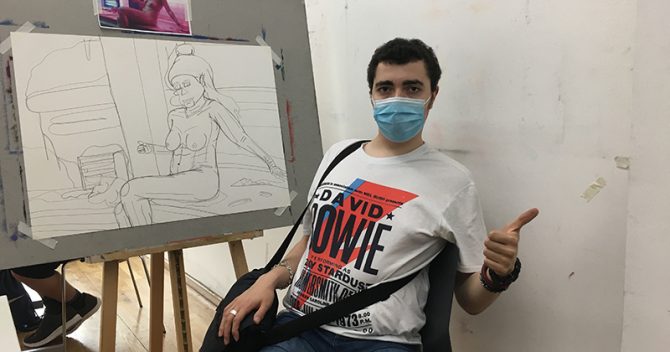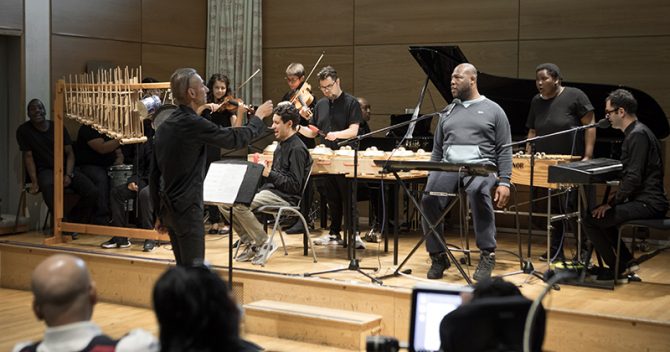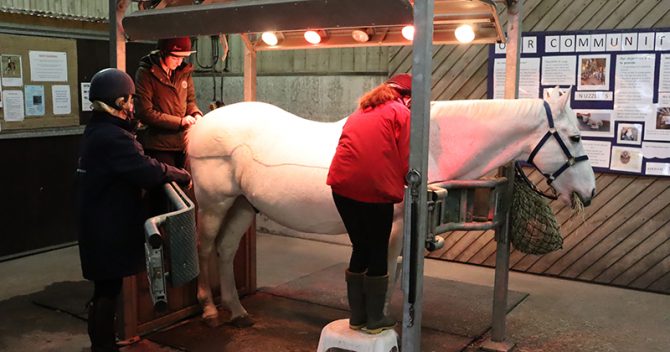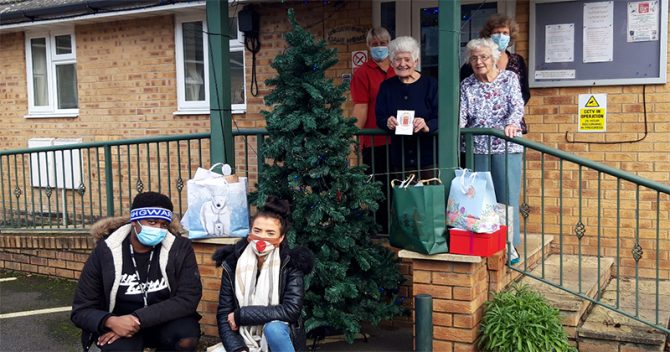After a gruelling first term, college staff spill the beans on how they have dealt with a period in education like no other
It has been an unprecedented time for college staff. Since the first lockdown in March they have stayed open for vulnerable learners, “bubbled” students, coped with their own health anxieties, ramped up cleaning procedures, moved their entire practice online and dealt with ever-changing government guidance and tier restrictions.
What in February was “rumours about something happening in China”, as Anita Lall, vice principal of Craven College in Yorkshire, puts it, was to become a global pandemic with consequences for learners and educators that few could foresee.
Now on the home straight to the Christmas break – one of the most exhausting terms in normal times – college leaders openly acknowledge that, as Ali Hadawi at Central Bedfordshire College notes, hard-working staff are “counting the days, the hours” until they can take a breather.
At the same time, many are clear their colleges “will never be the same” again. The coronavirus has wrought great changes in further education institutions, with some surprising consequences.

The scale of the challenge faced by college staff cannot be understated. Unlike schools, the further education sector delivers vocational and technical qualifications with strongly practical elements, which do not lend themselves easily to online lessons.
In many cases learners are either younger and already at risk of disengaging from education altogether, or older and responsible for children at home or who must shield. It’s also easy to forget that at some institutions, the college is literally home.
“We’re 52-week provision, remember,” explains Simon Welch, principal at National Star College for learners with special educational needs and disabilities in Cheltenham. During both lockdowns, 88 of the college’s usual 115 residential learners remained on site at all times. Even over Christmas, staff will stay to support them.
The same is true at numerous land-based colleges – at Askham Bryan College in York, 300 residential learners have “needed to be kept safe” throughout the pandemic, explains vice principal Sandra Burnhill. Many of her agriculture students also counted as essential workers, supervised by staff as they continued to pick fruit, milk cows and lamb sheep throughout lockdown “to keep the nation fed”.

Meanwhile, for other lecturers, the requirement to stay at home rather than in classrooms was itself a challenge.
Malcolm Goodwin, principal at Capel Manor College in north London, explains “we went from a completely face-to-face college to online in a handful of days. It was extraordinary.” Staff training for Zoom, Google Classroom, Microsoft Teams, breakout chats, video lessons and virtual homework were rapidly put on, in some cases for staff who had never used a single of those applications in their lives. When lockdown eased, more students were brought back in June.
By September, many staff were starting the new term without having had a real summer break.
Soon, a new issue rapidly emerged – the yawning learning gap among fresh recruits, resulting from the long period of “homeschooling”, an absence of summer schools and the A-level results debacle placing some learners on higher-level courses than they should be. “The big challenge of this first term has been engaging students that haven’t been in learning,” says Christine Ricketts, principal at Brooklands College in Surrey.
Another problem then soon became apparent. “Our existing students who had already had a lot of online learning since March were getting a bit fatigued with it.” Construction, engineering, hospitality and catering students had patiently endured lots of theory learning since lockdown, but the desire to get back on site for practical learning was growing, she says. “Some staff were seeing more students who were there in online lessons, but the camera and mikes were off. We needed to sort it quickly.”
A similar picture was emerging at Coventry College in the West Midlands, where students in bricklaying, performing arts and motor engineering also wanted to return. Assistant principal Gemma Knott explains: “We’d been very inventive with the timetable, having half of the learners in college and half out. But then lecturers said, ‘Actually, it’s not working to teach some of the learners remotely’.” The college reviewed its plans and prioritised bringing more students on practical courses back in.
The need for staff to be resilient and adaptable has clearly been intense.

The term “digital poverty” then also quickly became common parlance, as staff ran up against the issue. Dr Robert Rees, vice principal at City College Southampton, says “The main tricky bit this term has been straddling provision for those learners in college and those who are away, to ensure they are learning at the same pace.”
Like many colleges, his surveyed students for the first time about digital accessibility – revealing that 40 per cent didn’t have “sole access” to their own laptop and prompting the college to hand out 400. “But we still can’t get them good enough broadband,” continues Burnhill, many of whose learners live in rural Yorkshire. “The government must approve broadband services. There’s only so much colleges can do.”
But what colleges have been able to do is worthy of note. The range of strategies and solutions deployed to tackle the issues are admirable.
Faced with the prospect of virtual lessons, florist and saddler practitioners at Capel Manor College sent fresh flowers, leather and tools home to students so they could practise together over video link, while horticulture teachers “have gone into their allotments to film practicals”, according to the principal, Goodwin.
At National Star College, Welch explains teachers wore extra protective gear to continue “desperately needed” hydrotherapy in the swimming pool with vulnerable learners. They also moved other learners onto mini-campuses, so they could shield their most vulnerable learners on the main site while continuing education for all.

In many cases, meanwhile, it is clear that staff have acted on their own initiative rather than wait for college instruction. Hadawi explains that lecturers “devised learning parcels, so they could drop them off at students’ houses and then meet them online. That’s beyond the call of duty.”
He particularly praises office staff whose roles have rapidly changed. “The student services team have stayed in contact with every single vulnerable learner, delivering laptops, sending lunch vouchers. They’ve worked around the clock, including weekends.” Meanwhile at National Star, the “lettings team” found their diaries empty without events and instead “skillfully” reinvented themselves as “Covid test coordinators”, smiles Welch.
Other workarounds to keep learning on track have been rolled out.
When business apprenticeships were cancelled by SME employers, staff at Buxton & Leek College in Derbyshire invited learners to run a country fair and Christmas fair, according to assistant principal Alison Loxton. Similarly at Craven College in North Yorkshire, which was surrounded by tier 3 areas, apprenticeships were cancelled so the college put on mock interview practice and careers advice with employers online.
Lall, assistant principal, notes this move had an upside. “Because it was online, actually so many more employers could meet the learners. We doubled the number of employers usually engaging with us.”
She is not the only senior leader to point towards positive outcomes from the pandemic. Time and again, staff tell FE Week about an increased sense of closeness with one each other, students and families.
We didn’t have this kind of information to this level of depth before
A greater insight into learners has emerged, explains Dan Cundy, executive principal of South Bank Academies, who oversees South Bank Engineering UTC in London. “We’ve now got individualised student work accounts, so for the first time we can see on one platform all their learning, how much homework they’ve done, what lessons they’ve been in. It’s all there in one place.”
Danny Brett, assistant principal at Bishop Burton College in Yorkshire, explains “we didn’t have this kind of information to this level of depth before. We were conscious of connectivity issues for students before, but this has made us think differently and accelerated our want for information about that.”

In a way, the pandemic has caused the authorities to confront the long-standing problem of digital poverty at last.
At the London & South East Education Group, for instance, £198,000 was provided by the Greater London Authority and £142,000 by the Department for Education. Louise Wolsey, chief transformation officer at the group, explains how the coronavirus has also “accelerated the work we are doing with the NHS”. This includes a training programme starting this week for roles needed in hospitals, such as “Covid immuno-nurses”, “Covid programme admin support” and “seasonal flu immunisers”. “We’re seeing more partnerships like that spring up,” she says.
College leaders are candidly clear that without the impetus of coronavirus, a great deal of upskilling, adaptability and camaraderie would not have happened. Weekly quizzes, WhatsApp groups packed with memes and supportive colleagues have all had an impact.
Knott at Coventry College even says the pandemic finally cemented a community spirit across several campuses that merged together a few years ago, but hadn’t yet fully worked as one institution.
“You would never have been able to do all this when everything was normal,” explains Mark Malcomson, principal of City Lit College in central London. “If someone had said, ‘right, we’re going to move thousands of courses online with a few weeks’ notice,’ I’d have had a small-scale riot.”
How we are currently working is not sustainable for long
Yet the warnings about staff exhaustion remain. Hadawi explains that “pressure” on the sector is at risk of becoming an unbearable “stress” if the government doesn’t help more. “How we are currently working is not sustainable for long. Staff either need remunerating more, or I need to be able to hire more staff.”
The calls for greater funding, better broadband connectivity and clear guidance on assessment have not gone away.
But, reflects Malcomson, “we will not be the same because of this. There were many challenges initially, but opportunities too.
“I wouldn’t have wished it, but it’s made us a better institution.”









Your thoughts